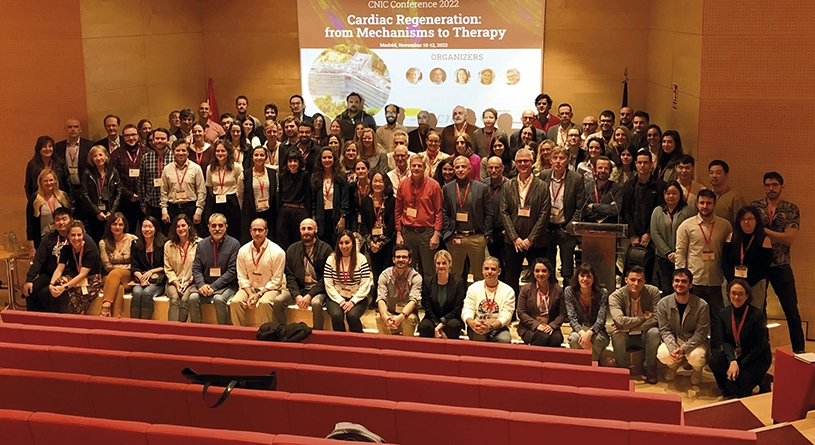CNIC Conference

Cardiac regeneration is currently one of the greatest challenges facing scientific research. Unlike other animals, such as the salamander or the zebra fish, human beings are incapable of regenerating their tissues and organs, but scientists do not know why.
The CNIC Conference 2022 discussed this topic in a scientific congress that tackled the latest advances in understanding the cardiac repair mechanisms of naturally regenerating organisms, and how to stimulate such mechanisms in mammals that do not regenerate.
CNIC brought together over a hundred international experts, who spent two days debating the current possibilities to overcome this scientific challenge and achieve regeneration of the human heart for the prevention of heart failure.
In the conference - organised by CNIC researchers Miguel Torres and Nadia Mercader - Elly Tanaka, Hesham Sadek and Mauro Giacca dealt with aspects ranging from metabolism and cardiac regeneration, the micro-environment of cardiomyocytes in this regeneration, cellular crosstalk and the translational road to cardiac regeneration from approaches involving genetics and tissue engineering.
There are animals with a high capacity to regenerate and repair myocardial damage with new cardiomyocytes
- the muscle cells that are capable of contracting and are responsible for heart beats. This is the case,
for instance, of the zebra fish; however, the same is
not true of the human heart, which cannot
naturally repair itself.
Experts critically discussed the current controversies surrounding the field of cardiac stem cells alongside other aspects such as the failure, to date, of a successful translation of experimental therapies to the clinical context.
















